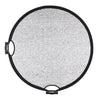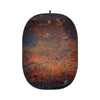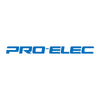Which Light should I buy? - By Richard Bradbury
Hello again everyone.
Hope you are all well.
In this blog post we are going to look at the often-asked question which light should I buy?
I get asked that quite often and it’s hard to answer. Why? The lack of context and information provided. If you are going to ask a photographer advice on gear please give as much info as you can such as:
· What types of work you shoot?
· What you want the light to do for you? (are you looking for it to solve a problem)
· Your budget?
With the info above it makes it much easier to answer the question but let’s look in to this further. We will be looking at the Pixapro range of lights here, but the thought process can be applied elsewhere. Lights all kind of look the same and do basically the same thing, but inside the specs can differ quite a bit. Investing in a higher end light will cost you more at the start but will save you time and money in the long term. This is what I did.
What do you shoot?
Portraits
Ok what type of portraits so you shoot? The portrait genre has many different sub genres to it which need not only a varied skill set but also potentially different lights to shoot them.
Do you shoot active/moving subjects or more static posed ones?


The requirements from lights can differ quite a bit for both portrait types and this is where we need to start to look at both the power of a light (Watt Seconds) and the flash duration.
Weddings & Events
For this type of work you need both portability, output and stopping power and frankly it is a lot to ask for a light to do at a good price. The Pixapro range has you covered here.
You can go spend £1500 on a Profoto and have one light or you can build a kit of 3 or more lights and have redundancy and options with Pixapro as well as great performance. Don’t get me wrong Profoto are great as are Broncolor but not everyone has that budget.
The battery powered options are your friends here and you have plenty of options.
PIKA 200’s
CITI 300
CITI400
Speedlites
You will most likely build a kit with a mixture of these. My take on this is go for some speedlites for on camera and off camera work run and gun and Pika 200’s for the heavy lifting. They will do anything you need as a wedding and event shooter and if you go all Lithium ION powered units, they will see you through a weekend’s worth of jobs no problem.
Commercial Work
For this type of work you will need a good range of power but more importantly good colour, stopping power and work all day capability. You need the flash power to be the same shot to shot and colour to stay good throughout your day.
Most likely you will be doing a mix of studio and location work for clients and need a kit that can do both. Sure you can rent in and in some cases you may need to but if you are looking to build your own kit as a longer term investment then the CITI Pro range are your go to offering good power options, colour performance and both mains/battery power.
I have had some horrible lights in my time with poor colour, poor power consistency and they would start to act up during an all-day shoot. I cannot have that on a commercial job. The gear needs to work and work well so it get’s out of your way. You do not want to be having to explain your gear problems to a commercial client.
This brings us to flash duration.
Flash Duration (your effective shutter speed / action stopping potential)

Flash duration is a measurement of the flash intensity at either above 50% or down to 10% of its maximum brightness. They are provided in specs as either T0.5 or T0.1. The more accurate and important of the two is the T0.1 value.
The T0.5 value skews the figures some and although the flash duration numbers may look good at 1/800-1/2000th sec they are not telling the whole story .
The issue with a T0.5 value is the measurement of the duration value is done at 50% so the flash exposure is still happening hence causing blur. Lights that only show a T0.5 value won’t end up in my kit as I want to know the T0.1 value and have a light that can stop action.
Shot with my older slower (in flash duration lights). 100% Crop 21mp.


Think of it this way. You buy a light that states a T0.5 duration value of 1/2000-1/800 seconds (T0.5) like the Kino II 600+ and you may think it will stop action… nope it won’t.
It’s a good light with plenty of power for static subjects and if you shoot static portraits all day long you can save money and get a light with the slower ( longer ) flash duration and be good to go.
That nice looking 1/2000th – 1/800th sec sound goods but they won’t freeze any but the slowest movement. This is because on the T0.5 measurement it is taken from the flash being at 50% of its peak output for a given setting and it has another 50% to go before the flash turns off.
Flash on on on on on on MOVEMENT…. On on on on off. You get motion blur.
I changed from my old lights to the Pixapro Storm II units for this reason. They list the duration in T0.1 and they can stop motion even with the high-resolution cameras I shoot with, this saves me time in post-production because I don’t have to try and fix an image which in turn saves me money.
This does not make slower duration light bad; they just don’t make sense for the work I do and what I need a light to do. You need to be thinking about this for your work.
What do you and your clients need?
Frozen in time – Walking towards camera shot.
Shot using the Storm II lights. 100% Crop 50mp.
This is what both I and my clients expect.


Lights with good short flash durations. – for freezing action
Mains Powered
Storm II 400 Colour Mode 1/416s - 1/4983s (T0.1) High Speed Mode 1/416s - 1/35086s (T0.1)
Storm II 600 Colour Mode 1/316s - 1/4246s (T0.1) High Speed Mode 1/316s - 1/28984s (T0.1)
Storm II 1200 Colour Mode 1/256s - 1/5554s (T0.1) High Speed Mode 1/256s - 1/25640s (T0.1)
Battery Powered
Pika 200/Pika Pro
Pika 200 Speedlite Head 1/220 – 1/13,000 sec (T0.1)
Pika 200 Bare Bulb Head 1/220 – 1/11,300 sec (T0.1)
Pika 200 Pro Speedlite Head 1/220 to 1/15380 seconds (T0.1)
Pika 200 Pro Bare Bulb Head 1/220 to 1/13150 seconds (T0.1)
CITI 300 Pro 1,220s - 1/10,200s (T0.1)
CITI 400 Pro 1/240s - 1/12,820s (T0.1)
CITI 600 Pro 1/220s - 1/10,000s (T0.1)
CITI 600 ( TTL or Manual) 1/220s - 1/10,000s (T0.1)
CITI 1200 Pro 1/220s - 1/10860s (T0.1)
Lights with long durations (T0.5) – Cheaper lights with good output.
Mains Powered Only - Lumi 400 II, Lumi 200 II, Kino II 1200+, Kino II 600+
Power (Watt Seconds)
I mentioned this second to flash duration because I feel that not many understand flash duration or know it exists. Power has a relationship with flash duration on some lights as well. Let’s break that down.
Not all lights are equal and the meter readings you may see online can mislead also, nightmare right.
Most of us start shooting using speedlites like the Li-ION 580 II and they are great, portable, and relatively powerful in terms of use case.. But they can not go head to head with a larger studio strobe in a large modifier.
A bare bulb will always yield a better quality of light in a softbox, beauty dish or umbrella modifier.
Now some lights will be at their best potential stopping capabilities at 1/1 full power, these are more traditional studio strobes (T0.5). The lower in power you go the worse the stopping potential is.
The other way lights present duration is the opposite way. A lower the power means the shorter a flash duration, higher the power the longer it is. These lights work using IGBT (Insulated Gate Bipolar Transistor) technology.
In the Pixapro range the speedlites, Storm II , Citi & Pika units all use IGBT and offer the shorter flash durations at a lower power setting and this is where (if you want to freeze movement) you need to consider the power of a light.
I will always go for where I can a more powerful light VS a lower power unit. This is because it allows me to run it a lower power setting to get the F stop I need along with a shorter flash duration. Even for head shots which are normally quite static. Imagine you have a head shot client on set and they are very expressive and move a fair bit when laughing or reacting to your bad jokes, you need power to be able to stop down for depth of field and stopping power in terms of flash duration to catch the moment sharp… now I will say that the moment and real reaction trumps all this technical any day of the week and twice on Sunday… the moment is king.
We often have no idea what a client will do on set and we need to be ready as a photographer and also with gear that will back us up.


The only time I may change my thoughts on light power is if I need to factor in portability for location work and of course the budget. That said if you deal with bright ambient light you may need to carry a more power location light in your kit like the CITI 600 Pro.
Let’s take a look at some flash duration figures on the lights with shorter duration times. I have been logging the flash durations of the Pixapro lights as I get them in the studio and running meter reading tests. To see these please join my Facebook Group.
Pika 200 (200 Watt Seconds) – I love these lights and have two in my location kit.
They have a flash duration range of 1/220th – 1/10989th (T0.1) with the bare bulb head.
At ½ power (100ws) I am getting 1/909th sec equivalent shutter speed with the short flash duration. But 100WS is not a ton of light when you need distance or a larger Fstop.
The Storm II 600 (600ws) lights have a duration range of 1/316s - 1/4246s (T0.1) in colour mode. I never use the high-speed mode on these as it is just not needed for my work.
At ½ power I am at 300ws (about 1.5 stops over the 100ws that the Pika puts out at ½ power) and I am yielding a duration of 1/1332th sec.
Now power scales are not uniform light to light in terms of wat seconds and power settings. Other variables factor in such as bulb shape and type, modifier used, bracket system used to hold the light and of course the electronics in a light and it’s power source ( mains V battery ).
In my meter reading tests using a Pixapro 120cm Octa (double diffused) at 6ft away I get F5.6 4/10ths on a Pika 200 bare bulb at 1/1 power and F11 1/10th on a Storm II 600 which is 1 and 2/3rd stops more light than the Pika.
So, if I need to be hitting F8 with a 120cm Octa at 6ft away in the studio and stop action I will grab a Storm II 600 and not a Pika. It just makes sense, more power and shorter durations. I can however use a Pika as a hair or kicker light at ¼ power and have plenty of stopping power to mix in with the storms.
Can you see where we need to consider both the work we shoot and the situations we shoot in?
They can and will dictate the limitations of your gear and also direct you where to go next if you break it down.
Remember not all lights are created equal. Personally, I would always go for a light that has the power range I need and the stopping power required. I believe this should be the case for most photographers also as we tend to favour sharp images over blurry ones.
When a photographer asks me for advice on gear, I will often answer the question(s) they asked with more questions from myself.
Think. What work do you do, what do your clients need and what do you need the said bit of gear to do.
The elephant in the room. – Colour
This often gets forgotten about or assumed all is well.
Colour is an important port of photography and colour accuracy is also. You may see a spec of 5600k +/- 200k on a lot of lights and this is pretty much a standard.
The +/- 200k value means the colour shift is no more than +/- 200 kelvin through the power range. If colour accuracy is important to your work then this is a minimum spec.
We do now have higher end light options in terms of colour temperature variation through a power range and that comes in the form of the CITI 400 Pro, CITI 600 Pro & CITI 1200 Pro lights which boast a kelvin value variation of +/-75k through the power range. The Pika Pro and 300 Pro units will provide +/- 100k.
My lights all provide +/- 200k and have served me and my clients extremely well colour wise. I do work within a calibrated workflow (monitor, camera profiles, meter) though.
If colour is critical to you and you shoot commercial work (Fashion, Food, Products) then I would go straight to the CITI / Pika Pro units for your work when starting out.
Summary
This has been quite a heavy post I get that, but it was written to highlight that we need to think of the work we do and clients needs more than we do sometimes. You have a metric ton of options on the market when building a lighting kit and it can be overwhelming, I want to do my bit to help make that a little easier for you.
I want people who come to my studio or speak to me for advice to walk away more informed to make a better buying choice.
If you have any questions or are stuck with putting a lighting kit together for your work give me a shout or speak to the Pixapro team.
Rick


















































































































































































































































































